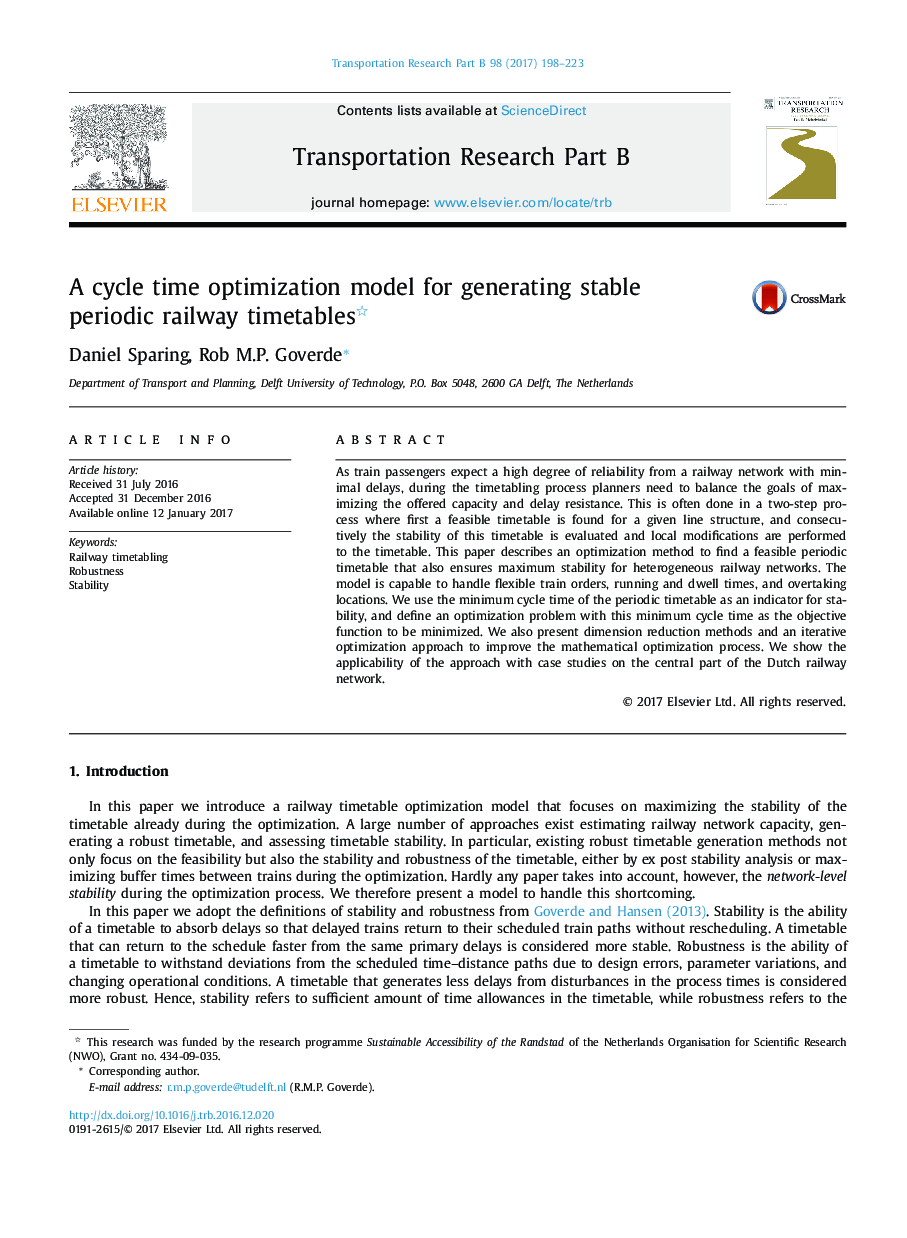| Article ID | Journal | Published Year | Pages | File Type |
|---|---|---|---|---|
| 5127123 | Transportation Research Part B: Methodological | 2017 | 26 Pages |
â¢We propose a model to compute optimal stable periodic railway timetables.â¢The model has flexible train orders, overtaking locations, and running times.â¢We minimize the cycle time while respecting timetable and headway constraints.â¢We extend PESP to a variable cycle time formulation and optimize the cycle time.â¢We propose an effective iterative solution method to solve large instances.
As train passengers expect a high degree of reliability from a railway network with minimal delays, during the timetabling process planners need to balance the goals of maximizing the offered capacity and delay resistance. This is often done in a two-step process where first a feasible timetable is found for a given line structure, and consecutively the stability of this timetable is evaluated and local modifications are performed to the timetable. This paper describes an optimization method to find a feasible periodic timetable that also ensures maximum stability for heterogeneous railway networks. The model is capable to handle flexible train orders, running and dwell times, and overtaking locations. We use the minimum cycle time of the periodic timetable as an indicator for stability, and define an optimization problem with this minimum cycle time as the objective function to be minimized. We also present dimension reduction methods and an iterative optimization approach to improve the mathematical optimization process. We show the applicability of the approach with case studies on the central part of the Dutch railway network.
